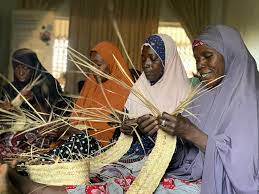
Duck farming has gained significant popularity in Nigeria due to its profitability and sustainability. With a growing demand for duck meat and eggs, starting a duck farming business can be a lucrative venture for aspiring farmers.
This comprehensive guide aims to provide valuable insights and step-by-step instructions on how to start duck farming in Nigeria.
Market Research and Feasibility Study:
Before embarking on any agricultural venture, conducting thorough market research and a feasibility study is essential. This step allows potential duck farmers to understand the market demand, competition, pricing, and potential buyers. Evaluate the market potential for duck products in your target area, including nearby towns, cities, and restaurants, to determine the profitability and sustainability of your venture.
Selecting the Duck Breed:
Several duck breeds are suitable for farming in Nigeria. Popular breeds include the Pekin, Muscovy, Khaki Campbell, and Indian Runner.
Muscovy Ducks: Muscovy ducks are one of the most common breeds in Nigeria, known for their high meat yield and excellent adaptability to local climates. They are larger than most other duck breeds, with males weighing between 4-6 kg and females between 2.5-4 kg. Muscovies have a distinctive appearance with feathered crests on their heads and bright red caruncles around their eyes. They are highly prized for their tender and flavorful meat, making them a preferred choice for commercial meat production.
Pekin Ducks: Originally from China, Pekin ducks are popular for both meat and egg production in Nigeria. They have a fast growth rate and reach market weight quickly, typically around 8 weeks. Pekin ducks have a white plumage, orange beaks, and orange legs. They are known for their excellent feed conversion, making them an efficient choice for commercial farming. Pekin ducks also produce large white eggs, which are sought after in the market.
Khaki Campbell Ducks: Khaki Campbell ducks are highly regarded for their exceptional egg-laying capabilities. They are known as prolific layers, producing around 250-300 eggs per year. These ducks have a khaki-colored plumage, and both males and females share similar appearances. Khaki Campbell ducks are relatively smaller in size, making them easier to handle and manage. They are well-suited for small-scale farming operations, particularly those focused on egg production.
Indian Runner Ducks: Indian Runner ducks are famous for their distinctive upright posture, resembling a wine bottle. They are slender and have long necks and legs. Indian Runners are primarily raised for their egg production, laying around 200-300 eggs per year. These ducks come in various colors, including white, black, fawn, and chocolate. Their unique physique allows them to forage effectively and consume pests, making them excellent pest control agents in agricultural settings.
Rouen Ducks: Originating from France, Rouen ducks are large and known for their stunning plumage. They closely resemble wild Mallards in appearance, with vibrant green heads and necks, deep chestnut-colored bodies, and blue wingtips. Rouens are dual-purpose ducks suitable for meat and egg production. While their egg-laying capacity is not as high as some other breeds, their flavorful meat and attractive appearance make them a desirable choice for specialty markets and small-scale farming.
Aylesbury Ducks: Aylesbury ducks are an English breed that gained popularity for their high meat yield and beautiful white feathers. They have a distinctive pink beak and orange legs. Aylesburys are relatively calm and easy to handle, making them suitable for backyard farming. Although their egg-laying capacity is moderate, they are favored for their tender meat, making them an excellent choice for gourmet and fine dining establishments.
Consider factors such as adaptability to the local climate, resistance to diseases, growth rate, egg production, and meat quality while selecting the breed. Consulting with local agricultural extension offices or experienced duck farmers can provide valuable insights into the best breed choices for your specific region.
Housing and Shelter:
Proper housing and shelter are crucial for the health and well-being of ducks. Construct a suitable duck house that provides protection from extreme weather conditions, predators, and diseases. Ensure adequate ventilation, drainage systems, and ample space for the ducks to move around comfortably. The house should also have separate sections for breeding, hatching, and feeding.
Feeding and Nutrition:
Ducks have specific dietary requirements for optimal growth and production. Their diet should consist of a balanced mix of grains, pellets, green leafy vegetables, and freshwater. Consult with a poultry nutritionist or local agricultural expert to develop a suitable feeding program based on the specific needs of your duck breed. It is essential to provide clean and fresh drinking water at all times.
Disease Prevention and Management:
Ducks are susceptible to various diseases, so disease prevention and management should be a priority. Vaccinations, regular health check-ups, and proper hygiene practices are essential to minimize the risk of disease outbreaks.
Duck Viral Enteritis (DVE): Duck Viral Enteritis, also known as Duck Plague, is a highly contagious viral disease that affects ducks, geese, and swans. It is caused by the herpesvirus and primarily affects young ducks. The disease is characterized by sudden death, anorexia, diarrhea, greenish droppings, swollen head, and neck, among other symptoms. Prevention and control measures include vaccination, proper biosecurity, and disinfection of premises and equipment.
Duck Viral Hepatitis (DVH): Duck Viral Hepatitis is a highly contagious viral disease that affects young ducks. It is caused by the duck hepatitis virus and is characterized by sudden death, decreased appetite, weakness, and diarrhea. Infected ducks may exhibit yellowish droppings and show signs of liver damage. Vaccination, strict biosecurity, and good sanitation practices are essential for preventing and controlling DVH.
Duck Cholera: Duck Cholera, caused by the bacterium Pasteurella multocida, is a bacterial disease that affects ducks, geese, and other poultry species. It is characterized by sudden death, loss of appetite, greenish or yellowish diarrhea, swollen joints, and difficulty breathing. Vaccination, proper sanitation, and hygienic practices, including the isolation and culling of infected birds, are vital for controlling Duck Cholera.
Duck Infectious Bursal Disease (DIBD): Duck Infectious Bursal Disease, also known as Gumboro disease, is a highly contagious viral infection that affects young ducks. It is caused by the Infectious Bursal Disease Virus (IBDV) and primarily affects the bursa of Fabricius, leading to immunosuppression.
The disease is characterized by depression, loss of appetite, diarrhea, and increased mortality rates. Vaccination, good biosecurity measures, and strict hygiene practices are essential for preventing and controlling DIBD.
Avian Influenza: Avian Influenza, commonly known as bird flu, is a highly contagious viral disease that affects ducks, chickens, and other bird species. It is caused by the influenza virus and can be transmitted to humans. Infected ducks may exhibit symptoms such as sudden death, decreased egg production, respiratory distress, diarrhea, and swollen combs and wattles. Strict biosecurity measures, vaccination, and surveillance are crucial for preventing and controlling Avian Influenza outbreaks.
Duck Salmonellosis: Duck Salmonellosis is a bacterial infection caused by various Salmonella species. It affects ducks, geese, and other poultry, and can also be transmitted to humans through contaminated products. Infected ducks may exhibit symptoms such as diarrhea, decreased appetite, weight loss, and weakness. Proper sanitation and hygiene, including the use of clean water sources and regular disinfection, are vital for preventing Salmonella infections in ducks.
Duck Mycoplasmosis: Duck Mycoplasmosis, caused by various Mycoplasma species, is a chronic respiratory disease that affects ducks, chickens, and turkeys. Infected ducks may display symptoms such as nasal discharge, coughing, sneezing, and swollen sinuses. Prevention and control measures include good biosecurity practices, proper ventilation, regular cleaning and disinfection, and appropriate antibiotic treatment.
Maintain a clean and hygienic environment, ensure proper waste management, and regularly disinfect the duck house and equipment. Consult with a veterinarian to develop a disease prevention and management plan specific to your farm.
Breeding and Hatching:
If your goal includes expanding your duck farming business, consider setting up a breeding program. Separate male and female ducks to control breeding and mating. Ducks are excellent natural breeders, but artificial insemination techniques can also be employed to optimize breeding success. Provide suitable nesting areas for ducks to lay their eggs and ensure proper incubation conditions for hatching.
Marketing and Selling Duck Products:
Develop a marketing strategy to effectively sell your duck products. Identify potential buyers such as hotels, restaurants, local markets, and individuals interested in purchasing duck meat and eggs. Utilize both offline and online channels, including social media platforms and online marketplaces, to promote your products. Establish good relationships with customers and prioritize product quality to build a loyal customer base.
Financial Planning and Record-Keeping:
Effective financial planning and record-keeping are essential for the success of any business. Develop a comprehensive budget that includes costs for housing, equipment, feed, vaccinations, and marketing. Keep detailed records of expenses, sales, and production to track the profitability of your venture. Regularly analyze the financial performance of your duck farm to make informed decisions and adjustments.
Conclusion:
Starting a duck farming business in Nigeria can be a rewarding and profitable endeavor. By conducting thorough market research, selecting suitable duck breeds, providing proper housing and nutrition, implementing disease prevention measures, and developing effective marketing strategies, aspiring farmers can establish a successful duck farm.
Remember to continually educate yourself, seek guidance from experts, and adapt to the ever-changing market conditions to ensure the long-term sustainability and profitability of your duck farming venture.
























